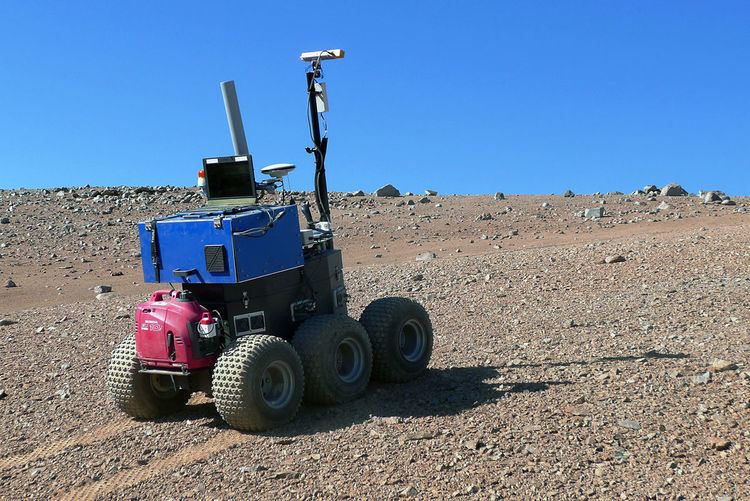 | ||
Vehicular automation involves the use of mechatronics, artificial intelligence, and multi-agent system to assist a vehicle's operator. These features and the vehicles employing them may be labeled as intelligent or smart. A vehicle using automation for difficult tasks, especially navigation, may be referred to as semi-autonomous. A vehicle relying solely on automation is consequently referred to as robotic or autonomous. After the invention of the integrated circuit, the sophistication of automation technology increased. Manufacturers and researchers subsequently added a variety of automated functions to automobiles and other vehicles.
Contents
Ground vehicles
Ground vehicles employing automation and teleoperation include shipyard gantries, mining trucks, bomb-disposal robots, robotic insects, and driverless tractors.
There are a lot of autonomous and semi-autonomous ground vehicles being made for the purpose of transporting passengers. One such example is the free-ranging on grid (FROG) technology which consists of autonomous vehicles, a magnetic track and a supervisory system. The FROG system is deployed for industrial purposes in factory sites and has been in used since 1999 on the ParkShuttle, a PRT-style public transport system in the city of Capelle aan den IJssel to connect the Rivium business park with the neighboring city of Rotterdam (where the route terminates at the Kralingse Zoom metro station). The system experienced a crash in 2005 that proved to be caused by a human error.
Applications for automation in ground vehicles include the following:
Research is ongoing and prototypes of autonomous ground vehicles exist.
Cars
Extensive automation for cars focuses on either introducing robotic cars or modifying modern car designs to be semi-autonomous. Semi-autonomous designs could be implemented sooner as they rely less on technology that is still at the forefront of research. An example is the Dual mode monorail. Groups such as RUF (Denmark), BiWay (UK), ATN (New Zealand) and TriTrack (USA) are working on projects consisting of private cars that dock onto monorail tracks and are driven autonomously. As a method of automating cars without extensively modifying the cars as much as a robotic car, Automated highway systems (AHS) aims to construct lanes on highways that would be equipped with, for example, magnets to guide the vehicles. Automation vehicles have auto-brakes named as Auto Vehicles Braking System (AVBS). Highway computers would manage the traffic and direct the cars to avoid crashes.
The European Commission has established a smart car development program called the Intelligent Car Flagship Initiative. The goals of that program include:
There are plenty of further uses for automation in relation to cars. These include:
Trucks
The concept for autonomous vehicles has also been applied for commercial uses, like for autonomous or nearly autonomous trucks. As recorded in June 1995 in Popular Science Magazine, self-driving trucks were being developed for combat convoys, whereby only the lead truck would be driven by a human and the following trucks would rely on satellite, an inertial guidance system and ground-speed sensors. Caterpillar Inc. made early developments in 2013 with the Robotics Institute at Carnegie Mellon University to improve efficiency and reduce cost at various mining and construction sites. Companies such as Suncor Energy, a Canadian energy company, and Rio Tinto Group were among the first to replace human-operated trucks with driverless commercial trucks run by computers. In April 2016, trucks from major manufacturers including Volvo and the Daimler Company completed a week of autonomous driving across Europe, organized by the Dutch, in an effort to get self-driving trucks on the road. With developments in self-driving trucks progressing, U.S. self-driving truck sales is forecasted to reach 60,000 by 2035 according to a report released by IHS Inc. Automotive in June 2016.
Automated guided vehicle
An automated guided vehicle or automatic guided vehicle (AGV) is a mobile robot that follows markers or wires in the floor, or uses vision, magnets, or lasers for navigation. They are most often used in industrial applications to move materials around a manufacturing facility or warehouse. Application of the automatic guided vehicle has broadened during the late 20th century.
Aircraft
Aircraft has received much attention for automation, especially for navigation. A system capable of autonomously navigating a vehicle (especially aircraft) is known as autopilot.
Watercraft
Autonomous boats can provide security, do research, or perform hazardous or repetitive tasks (such as guiding a large ship into a harbor or transporting cargo).
Submersibles
Underwater vehicles have been a focus for automation for tasks such as pipeline inspection and underwater mapping. See Autonomous underwater vehicle.
Trains
An example of an automated train is the Docklands Light Railway in London.
Limitations
One of the current limitations for vehicular automation is the electrical power required to run the processors.
